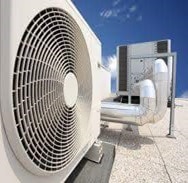Ever wonder how the cooling machines we use in our everyday lives actually work? Refrigeration is an important component to so many industries, and plays a major role in everyday life for all of us.
There are many components that come together to chill the important units and machines we use everyday:
1. The Compressor
A compressor pulls refrigerant vapor in from the low pressure side of the circuit, and releases it at a high pressure into the high pressure side of the circuit.
A compressor is the heart of any refrigeration system. It keeps the refrigerant flowing through the system at specific rates of flow, and at specific pressures.
The rate of flow through the system will always depend on the size of the unit, just as the operating pressures will depend on the type of refrigerant being used and the desired evaporator temperature.
2. The Condenser
Most air-cooled refrigeration systems are designed so that the refrigerant will condense at a temperature about 25 to 30 degrees above the air temperature around the condenser.
On the other hand, water cooled systems are designed for 75° to 95° entering condenser water temperature, with 85° being the most common temperature.
With water-cooled condensers, refrigerant will condense at a temperature of about 10° above condensing water temperature, or 20° above entering condenser water temperature.
When the hot refrigerant vapor that is discharged from the compressor travels through the condenser, the cool air or water flowing through the condenser coil absorbs enough heat from the vapor to cause it to condense.
3. High Temperature
The refrigerant must condense at a high temperature so the heat energy in the vapor can move into the cold air or water, and cause the refrigerant to condense.
At this stage in the refrigeration cycle, high pressure liquid refrigerant will flow down the liquid line, through a filter drier that is designed to prevent contaminants from flowing through the system, and onto the metering device.
4. Compressor Pumps
The compressor pumps refrigerant gas from a low pressure to a high pressure. The high pressure, high temperature gas is changed into a liquid in the condenser, which removes heat energy from the refrigerant. The metering device reduces and regulates the pressure of the liquid refrigerant, which also reduces the temperature at which it evaporates. This exchanges heat from the process fluid to the refrigerant.
5. Process Circuit
The process fluid circuit is connected to the refrigeration circuit at the evaporator/heat exchanger. The process fluid, with the heat removed, is stored in a reservoir and pumped to the application where the fluid removes its heat and flows back to the chiller tank and heat exchanger to continue the cycle.
The process fluid will be maintained at a constant temperature and flow regardless of the heat load applied at the application. Some process circuits operate with multiple pumps, multiple cooling loops and can have other unique components.
6. Air Conditioning Chillers / Process Chillers?
Process chillers are made to operate at different temperatures with different fluids and different flow rates. These have the ability to work with multiple pumps and multiple cooling circuits. The systems typically includes a pump and reservoir designed by the manufacturer, which are integrated into the chiller design.
Air conditioning chillers are made to run at one temperature, one flow rate and one fluid type. Typically, the design is a pressurized system and the pump and reservoir are designed and sourced by the installing contractor.
To learn more about refrigeration, visit our website at legacychillers.com, or take a look at our YouTube channel for more informational videos.

